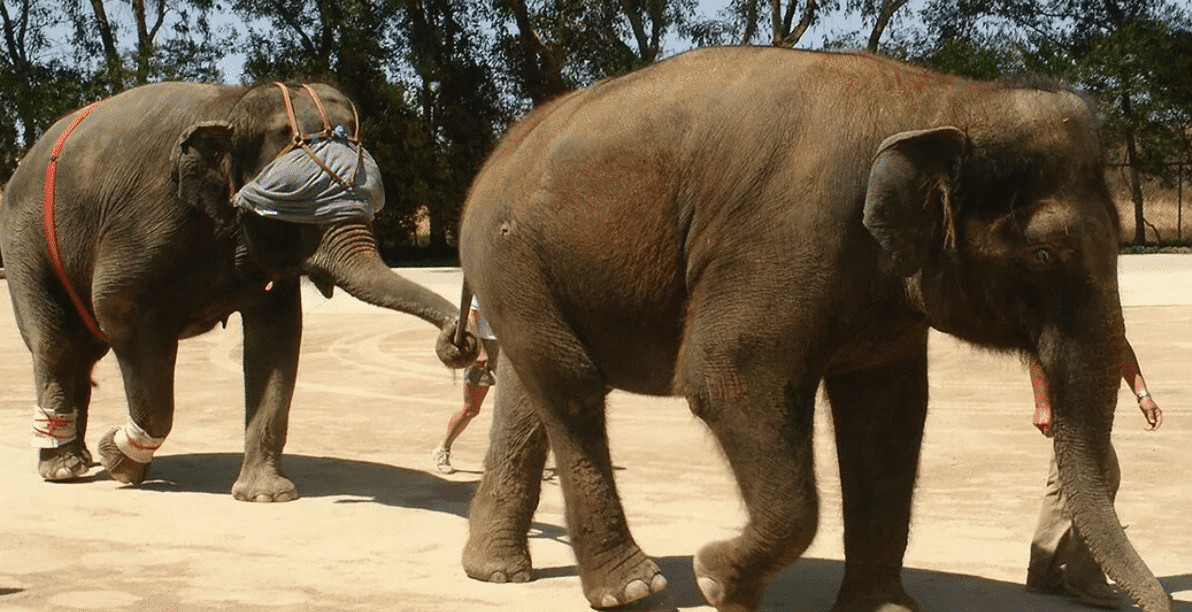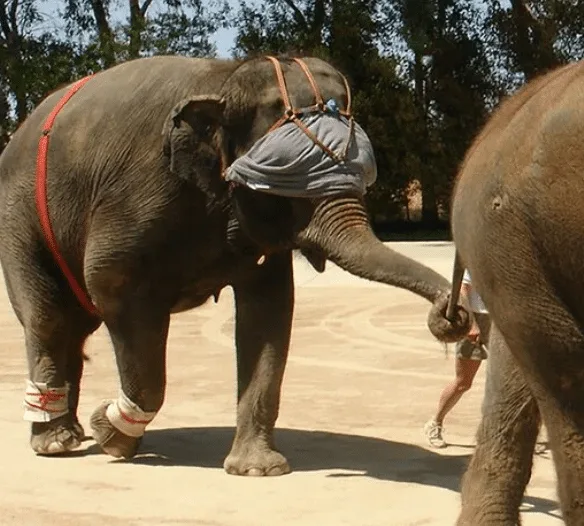According to a recent study, elephants depend on visual cues to keep their stride timing consistent.

Elephants, with their immense size and undeniable majesty, have always captured the imagination of humans. These gentle giants have been subjects of countless stories, legends, and, regrettably, mistreatment throughout history. In the quest to understand and connect with these magnificent creatures, researchers and caretakers have uncovered a surprising phenomenon – the Giant Blindfold Trick. This unconventional method allows humans to gain insight into the intricacies of elephant balance and raises questions about the intersection of human interaction with nature.
The Elephant’s Delicate Equilibrium
Before delving into the remarkable world of the Giant Blindfold Trick, it is essential to comprehend the delicate equilibrium that elephants maintain in their daily lives. These colossal mammals are known for their exceptional balance, which is crucial for their survival in the wild. Balance enables them to navigate dense forests, traverse uneven terrain, and access food sources high in trees. Their equilibrium is a testament to nature’s intricate design and adaptation.
The Giant Blindfold Trick: What Is It?
The Giant Blindfold Trick is not about causing harm to elephants but rather an effort to better understand their remarkable abilities. It involves temporarily obstructing an elephant’s vision with a giant blindfold or curtain, allowing researchers and caretakers to observe their behavior and reactions in a controlled environment. This technique is used in sanctuaries and research facilities worldwide to gain valuable insights into the inner workings of elephant balance.
Check out: Snoring Elephant.
Understanding the Elephant’s Reaction

When an elephant’s vision is temporarily obscured, it experiences a momentary loss of spatial awareness. This can lead to fascinating observations about their reliance on sight, hearing, and touch to maintain balance. Some elephants adapt quickly to the blindfold, relying on their other senses, while others may become disoriented or cautious. These reactions offer valuable information about individual differences in elephant behavior and their ability to adapt to changing circumstances.
Check out: Dog Caught Speeding While Behind Wheel Of Car.
Ethical Considerations
The use of the Giant Blindfold Trick raises ethical questions about human interactions with elephants. While it provides crucial insights into their equilibrium, it also highlights the need for responsible and respectful interactions with these animals. Caretakers and researchers must prioritize the welfare and comfort of the elephants. This means ensuring that such experiments are conducted with care and for educational purposes only.
Check out: Urgent Season for Bear Cubs Safety Along Yosemite’s Tioga Road.
Conservation Implications

Studying the Giant Blindfold Trick can have broader implications for elephant conservation. By gaining a deeper understanding of their balance and sensory adaptations, researchers can develop strategies to protect elephants in the wild. This knowledge may aid in mitigating human-elephant conflicts. Additionally, improving captive elephant welfare, and informing conservation efforts aimed at preserving these remarkable creatures for future generations.
Find out Top 10 Facts About Elephants.
Bottom Line
The Giant Blindfold Trick may initially sound unconventional, but it offers valuable insights into the remarkable world of elephant equilibrium. By temporarily blocking their vision, researchers and caretakers can gain a deeper understanding of these majestic animals’ balance and sensory adaptations. However, it is essential to approach such experiments with the utmost respect for the welfare of the elephants involved. Furthermore, to use the knowledge gained for the betterment of both captive and wild elephant populations. In doing so, we can continue to appreciate and protect these magnificent creatures for generations to come.
Thanks for reading along, for more articles like this check out our related article links below!
Next up:
- Camper Finds Himself Surrounded By Alligators In Middle Of Night - May 3, 2024
- Have You Ever Seen A Sword Fighting Dog? - May 3, 2024
- Pro Athlete Rescues Stray Dog Who Kept Showing Up To Practice - May 2, 2024


